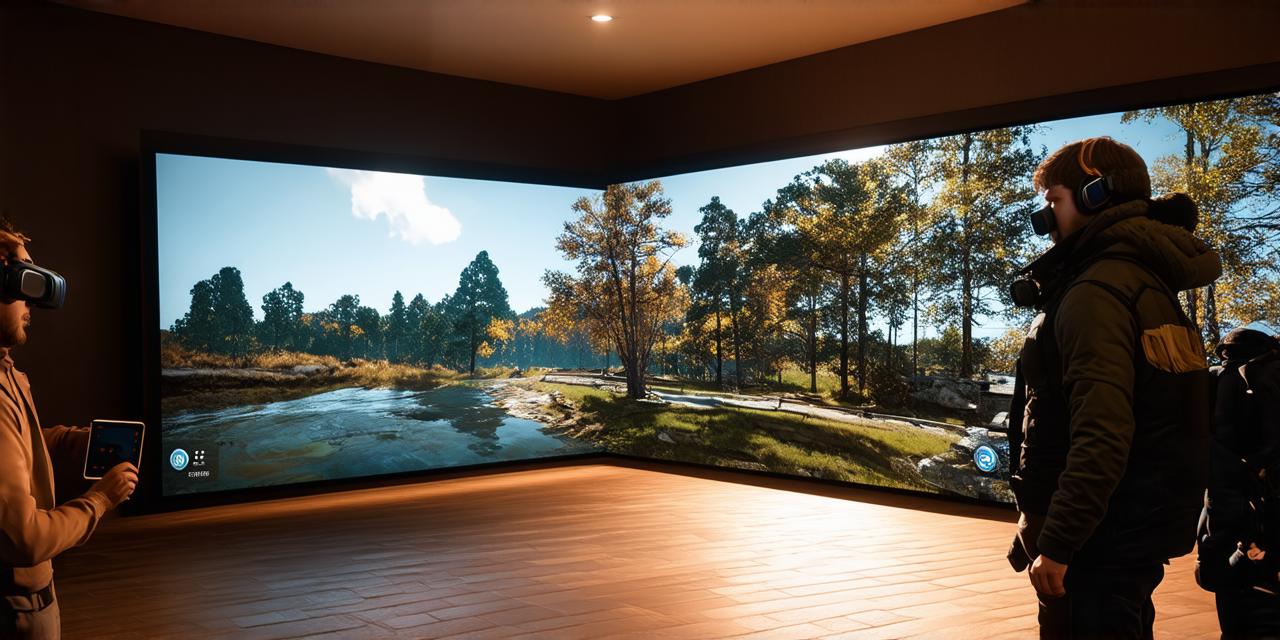Virtual reality (VR) technology has been rapidly advancing in recent years, promising to revolutionize the way we interact with digital content and each other.
Medical Applications of Virtual Reality
One area where VR technology has already made a significant impact is in medicine. The immersive and interactive nature of VR makes it ideal for training medical professionals and providing patients with new forms of therapy.
Surgical Training
With the help of VR, doctors and surgeons can practice complex procedures in a safe and controlled environment before performing them on real patients. This can significantly reduce the risk of complications and improve patient outcomes. In fact, some hospitals are now using VR to train surgeons for procedures as diverse as heart surgery, brain surgery, and even amputations.
Pain Management
VR technology can also be used to manage pain in patients who are unable to tolerate traditional pain medications. By creating immersive environments that distract the patient from their pain, VR can help to reduce suffering and improve overall well-being. One example of this is the use of VR for burn victims, who can experience a sense of normalcy by virtually walking through a virtual environment.
Physical Therapy
Virtual reality can also be used in physical therapy to simulate real-world movements and provide patients with a more engaging and motivating form of rehabilitation. By creating customized exercises that match the patient’s specific needs, VR can help to improve mobility, strength, and balance.
Mental Health Treatment
Finally, VR technology can be used to treat a wide range of mental health conditions, including anxiety, depression, and PTSD. By creating virtual environments that simulate real-world situations, patients can confront their fears in a safe and controlled environment. This can help to reduce symptoms and improve overall well-being.
Educational Applications of Virtual Reality
Another area where VR technology is having a significant impact is in education. By creating immersive and interactive environments, VR can provide students with new forms of learning experiences that are both engaging and effective.
Virtual Field Trips
With the help of VR, students can take virtual field trips to locations around the world without ever leaving their classrooms. This can provide students with a unique opportunity to explore new cultures and learn about history and geography in an engaging and interactive way.
Science Simulations
VR technology can also be used to simulate scientific experiments and phenomena in a safe and controlled environment. By creating virtual simulations of complex systems, students can gain a deeper understanding of the underlying principles and develop critical thinking skills. This can be particularly useful for subjects like physics, chemistry, and biology.
Language Learning
Finally, VR technology can be used to help students learn new languages in an immersive and interactive way. By creating virtual environments that simulate real-world situations, students can practice speaking and listening skills in a natural and engaging way. This can help to improve language proficiency and enhance cultural awareness.
Entertainment Applications of Virtual Reality
Virtual reality technology is also being used in the entertainment industry to create new forms of immersive experiences for consumers. By creating virtual environments that simulate real-world situations, VR can provide users with a unique and engaging form of entertainment that is both thrilling and immersive.
Video Games
The most obvious application of VR technology is in video games. With the help of VR headsets, gamers can enter virtual worlds and interact with digital characters in ways that were previously impossible. This has led to the creation of new forms of gaming experiences that are both immersive and engaging.
